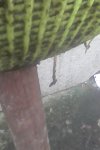markyscott
Imperial Masterpiece
Forgot to include the link to the article he references:
ALWAYS back check a reference. In this case I think
his correlation between the sourced material and bonsai
is tenuous at best. Read the abstract of what the article
actually addresses HERE.
Thanks Armetisius - I also found the full reference.
http://hort.ifas.ufl.edu/woody/documents/articles/EFG0901.pdf
The objective of the study was to evaluate the described shaving technique as a means of avoiding encircling roots on nursery grown plants. The primary issue that they were addressing was stability of nursery trees in the landscape - apparently trees with roots issuing radially from the trunk are more stable than trees with encircling roots. Control was provided by trees up-potted without anything having been done to the rootball - they reported that growth was not affected by shaving vs control. The results were measured by a qualitative evaluation of the rootball and the degree to which encircling roots were eliminated by the shaving, not by growth rates. There was no quantitative comparison of growth rates following the shaving technique to any other root pruning technique used by nurserymen (let alone bonsai growers). However, they did offer a very interesting but qualified (and qualitative) comparison to other studies which did look at growth rates:
"This demonstrates as others have shown (15) that container grown shade trees receiving regular irrigation can recover from severe root pruning without slowing their shoot growth."
With reference to the original question posed by the opening post, there was a reference in the paper to "air pruning", which may be equivalent to planting in a colander. Their characterization of air pruning was the following:
"Seedlings in air-pruning 5 cm (2 in) diameter containers had less packed roots, less spiraling roots, and fewer L-shaped roots (25). The authors noted that seedling grown trees in air-pruning containers produced less root defects than those grown in solid-walled containers, but they had slower root and canopy growth in the nursery due to the lateral air- pruning (25)."
I found those two conclusions fascinating as it seems to suggest that severe root pruning of container plants does not affect growth rates but air pruning does. I'll see if I can track down the other reference.
Scott
Last edited:

